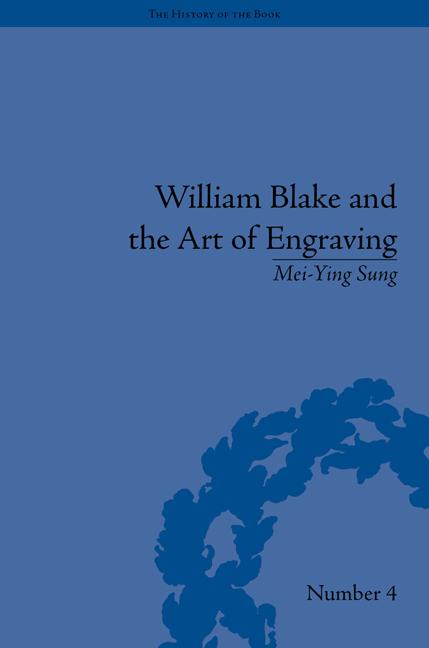Book contents
- Frontmatter
- CONTENTS
- Abbreviation
- List of Figures
- Acknowledgements
- Introduction
- 1 The History of the Theory of Conception and Execution
- 2 The Evidence of Copper Plates
- 3 Blake's Engraved Copper Plates
- 4 Copper Plate Makers in Blake's Time
- 5 Blake's Virgil Woodcuts and the Earliest Re-Engravers
- Conclusion
- Notes
- Works Cited
- Index
5 - Blake's Virgil Woodcuts and the Earliest Re-Engravers
- Frontmatter
- CONTENTS
- Abbreviation
- List of Figures
- Acknowledgements
- Introduction
- 1 The History of the Theory of Conception and Execution
- 2 The Evidence of Copper Plates
- 3 Blake's Engraved Copper Plates
- 4 Copper Plate Makers in Blake's Time
- 5 Blake's Virgil Woodcuts and the Earliest Re-Engravers
- Conclusion
- Notes
- Works Cited
- Index
Summary
Although Blake's reputation as a printmaker has largely been rested on his work in etching and engraving, paradoxically, his influence in the nineteenth and twentieth centuries has often stemmed from his single set of woodcuts made in later life, illustrating Robert Thornton's edition of Virgil. It has been widely recognized that the admirers and followers of Blake known as ‘the Ancients’, who all knew Blake during his lifetime, including members such as John Linnell, Samuel Palmer, George Richmond, and Edward Calvert, achieved their art of spiritual landscapes and figures with inspiration from Blake's Virgil. On Samuel Palmer, they exerted a profound and lasting effect: ‘I sat down with Mr Blake's Thornton's Virgil woodcuts before me, thinking to give to their merits my feeble testimony. I happened first to think of their sentiment. They are visions of little dells, and nooks, and corners of Paradise; models of the exquisitest pitch of intense poetry. I thought of their light and shade, … Intense depth, solemnity, and vivid brilliancy only coldly and partially describe them. There is in all such a mystic and dreamy glimmer as penetrates and kindles the inmost soul, and gives complete and unreserved delight, unlike the gaudy daylight of this world’. Among the Ancients, Palmer and Calvert followed most closely Blake's Virgil in their compositions and style. But even Blake's admirers and followers had mixed and contradictory views when talking about his techniques. For the Ancients, the ‘immortal spirits’ which ‘move[d] simple souls to tears’ was the creation of Blake's ‘careless and incorrect’ technique.
Although Blake's Virgil has been widely discussed, how Blake's works were viewed in his time has not often been addressed in Blake studies. This chapter examines for the first time an early re-engraved woodblock which can be associated with the early reception of this series located in the Huntington Library. The woodblock is a clear adaptation of one or more Blake's images from his set for Thornton's Pastorals of Virgil, appears to be an anonymous re-engraving possibly dating from Blake's own lifetime and it provides a good indication of contemporary conflicting views surrounding the Virgil woodcuts.
- Type
- Chapter
- Information
- William Blake and the Art of Engraving , pp. 141 - 164Publisher: Pickering & ChattoFirst published in: 2014



